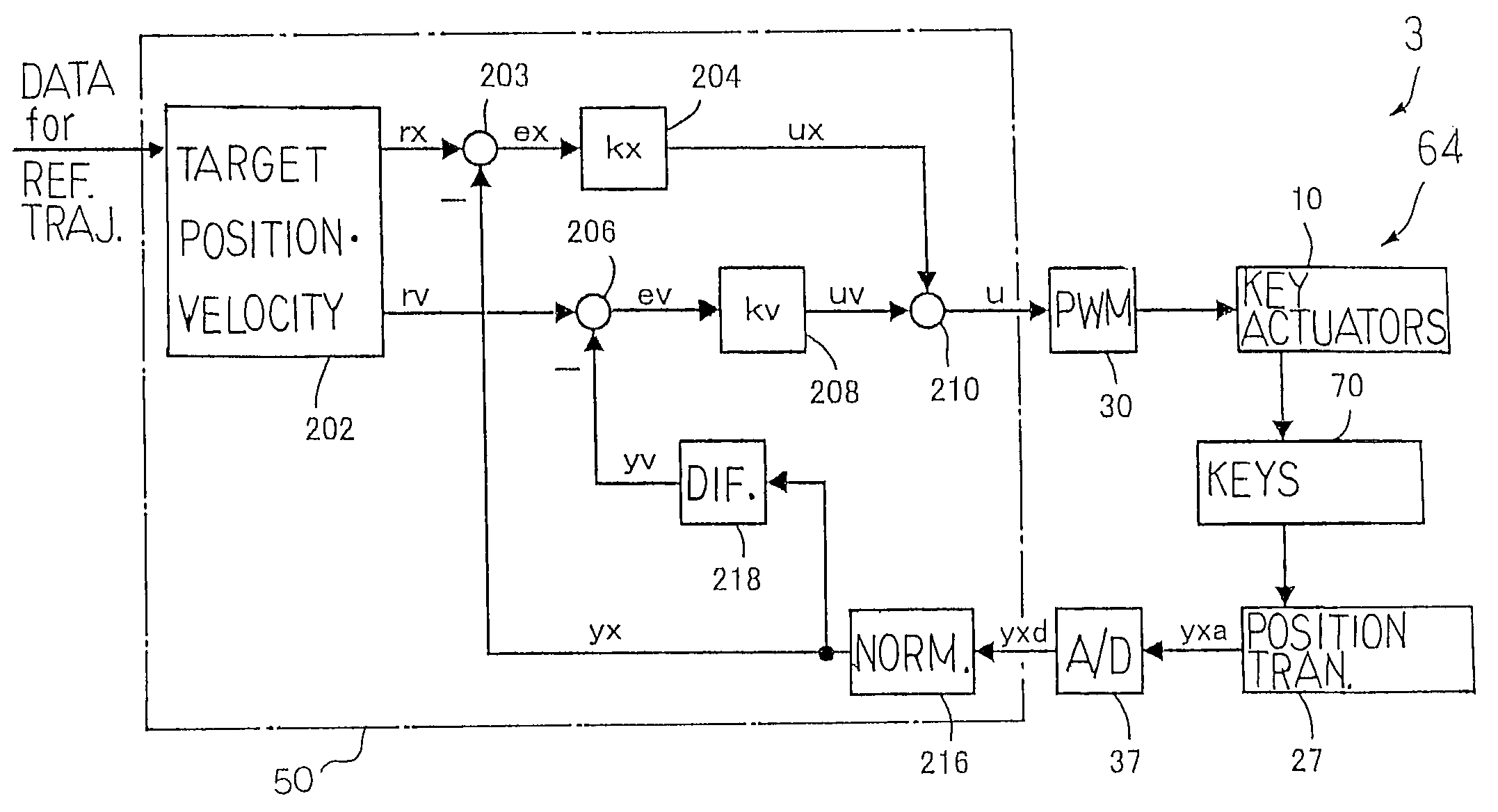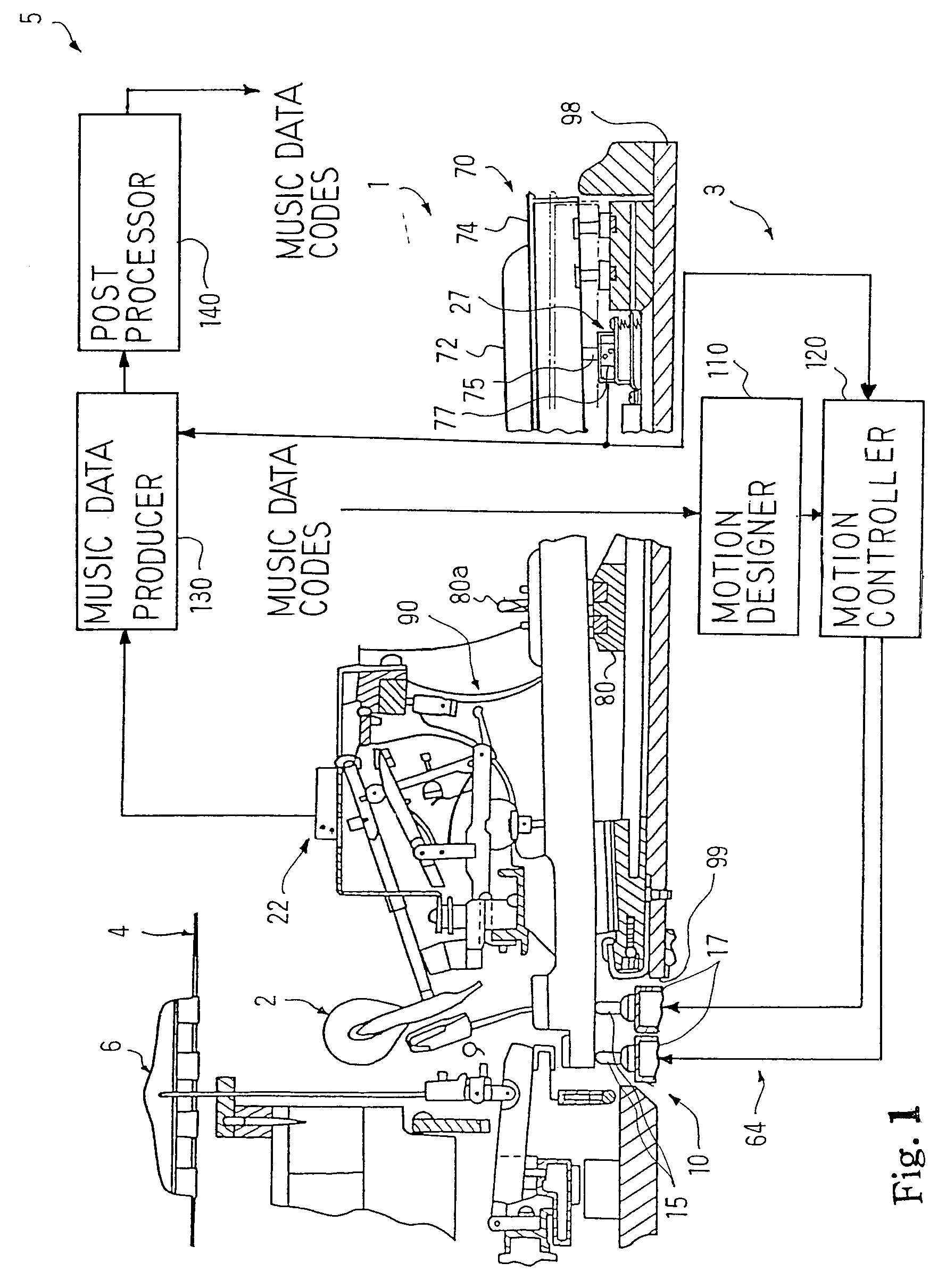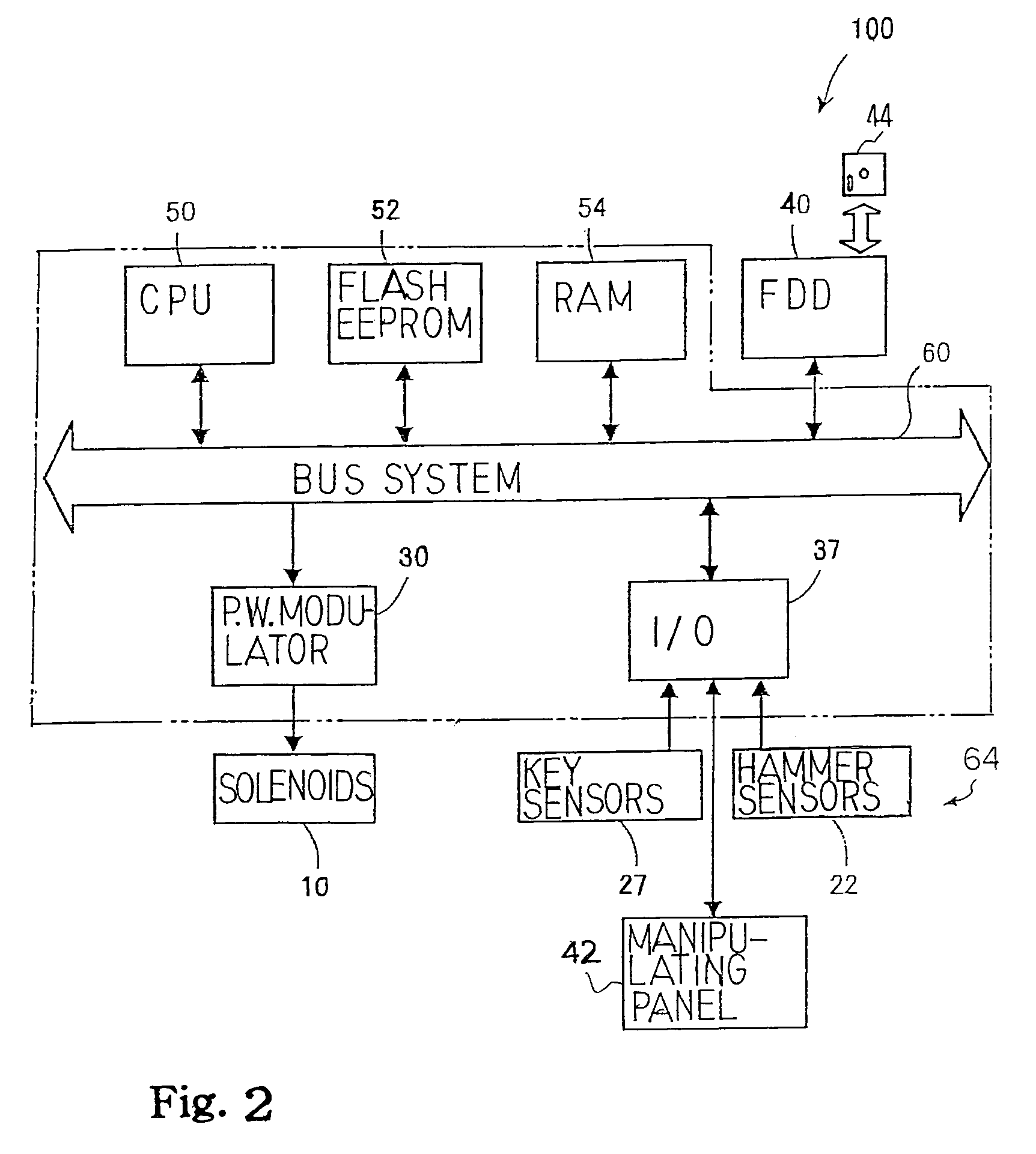Automatic player musical instrument for exactly reproducing performance and automatic player incorporated therein
a musical instrument and automatic technology, applied in the direction of instruments, electrophonic musical instruments, music aids, etc., can solve the problems of large gain of the feedback loop, prone to oscillation and overshoot, and difficult to apply the feedback control technique disclosed in the second reference to the key actuator
- Summary
- Abstract
- Description
- Claims
- Application Information
AI Technical Summary
Benefits of technology
Problems solved by technology
Method used
Image
Examples
first embodiment
Automatic Player Piano
[0030]Referring to FIG. 1 of the drawings, an automatic player piano embodying the present invention largely comprises an acoustic piano 1, an automatic playing system 3 and a recording system 5. The automatic playing system 3 and recording system 5 are installed in the acoustic piano 1, and are selectively activated depending upon the mode of operation. While a player is fingering a piece of music on the acoustic piano 1 without any instruction for recording and playback, the acoustic piano 1 behaves as similar to a standard acoustic piano, and generates the piano tones at the pitches specified through the fingering.
[0031]When the player wishes to record his or her performance on the acoustic piano 1, the player gives the instruction for the recording to the recording system 5, and the recording system 5 is activated. While the player is fingering on the acoustic piano, the recording system 5 produces music data codes representative of the fingering on the aco...
second embodiment
[0092]FIG. 11 shows another algorithm employed in a feedback control loop 64C incorporated in another automatic player keyboard musical instrument embodying the present invention. The automatic player keyboard musical instrument also comprises an acoustic piano, a recording system and an automatic playing system 3C. The acoustic piano and recording system are similar to the acoustic piano and recording system of the automatic player keyboard musical instrument implementing the first embodiment, and the velocity sensors 28 are used in the recording system and automatic playing system 3C. However, the subroutine program in the playback mode and feedback control loop 64C are different from those of the automatic playing system 3. For this reason, description is hereinafter focused on the feedback control loop 64C. The system components of the automatic playing system 3C are hereinafter labeled with the references designating the corresponding system components of the automatic playing ...
third embodiment
[0103]FIG. 12 shows the algorithm employed in a feedback control loop 64D incorporated in yet another automatic player keyboard musical instrument embodying the present invention. The automatic player keyboard musical instrument also comprises an acoustic piano, a recording system and an automatic playing system 3D. The acoustic piano and recording system are similar to the acoustic piano 1 and recording system 5, and the position transducers 27 are used in the recording system and automatic playing system 3D. However, the subroutine program in the playback mode and feedback loop 64D are different from those of the automatic playing system 3. For this reason, description is hereinafter focused on the feedback loop 64D. The system components of the automatic playing system 3D are hereinafter labeled with the references designating the corresponding system components of the automatic playing system 3 without detailed description.
[0104]The central processing unit 50, pulse width modula...
PUM
 Login to View More
Login to View More Abstract
Description
Claims
Application Information
 Login to View More
Login to View More - R&D
- Intellectual Property
- Life Sciences
- Materials
- Tech Scout
- Unparalleled Data Quality
- Higher Quality Content
- 60% Fewer Hallucinations
Browse by: Latest US Patents, China's latest patents, Technical Efficacy Thesaurus, Application Domain, Technology Topic, Popular Technical Reports.
© 2025 PatSnap. All rights reserved.Legal|Privacy policy|Modern Slavery Act Transparency Statement|Sitemap|About US| Contact US: help@patsnap.com



